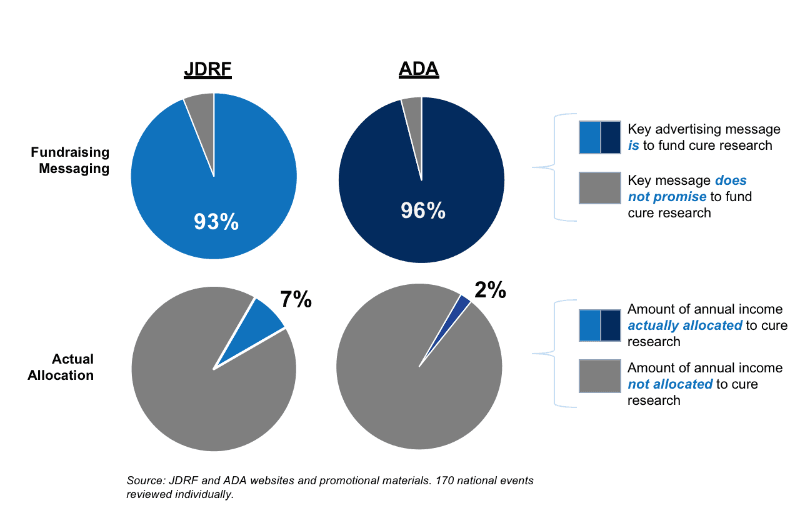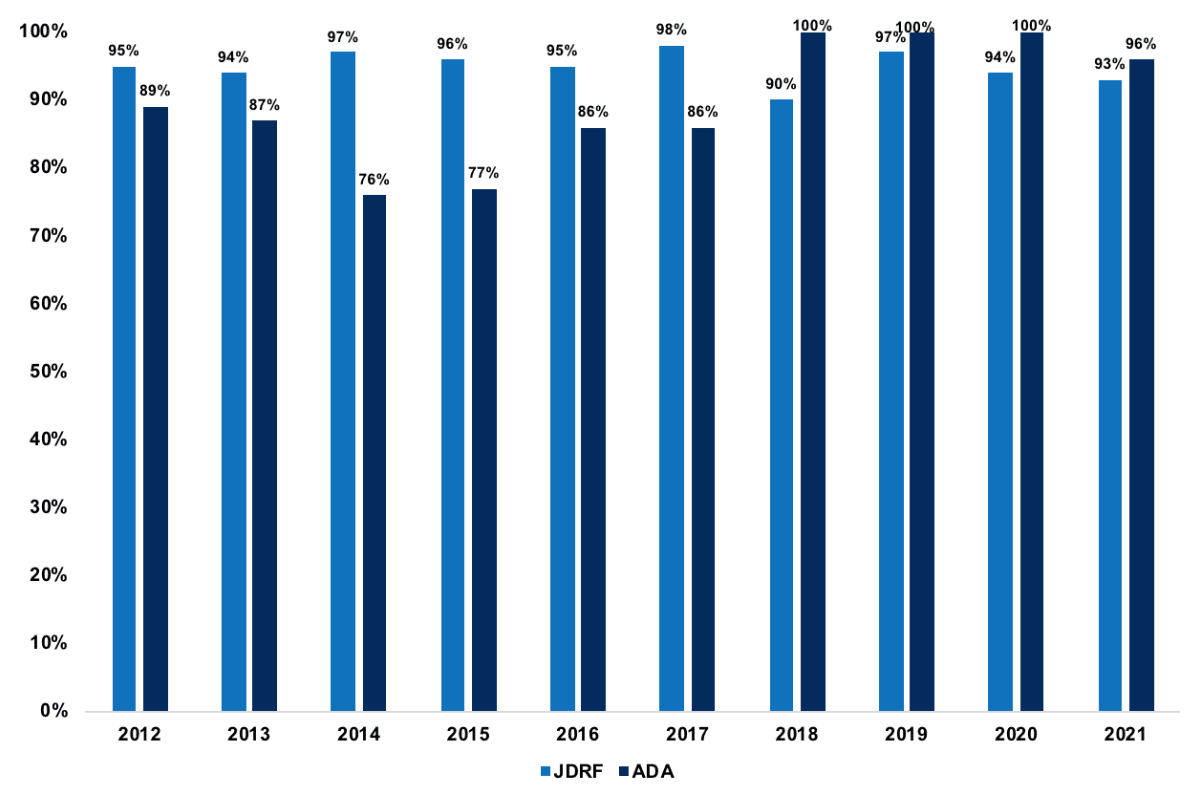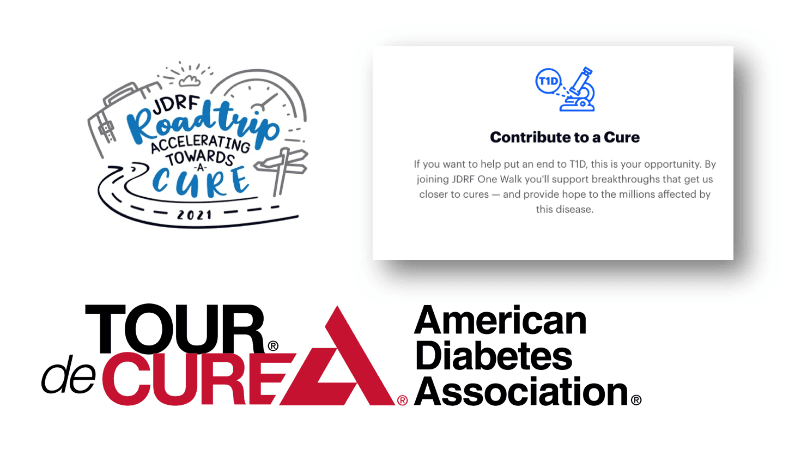September 30, 2021
Each year, the T1D community shows up in massive numbers to walk, ride, and fundraise for JDRF, the ADA, and other T1D non-profits.
These events are more than just an opportunity to donate; they are a chance for us to unite under the common goal of improving the lives of everyone battling the daily challenges of T1D. And for everyone in the community, nothing is more important than finding and funding a T1D cure.
These events are a key money-maker for the organizations that host them, raising around $150 million in revenue every year. When it comes to advertising, fundraising organizations look to achieve universal donor appeal to maximize donations. Most T1D event ads promise that money raised will fund cure research. Since funding cure research is the top priority of donors, no other promise comes close in relevance or marketing power.
This is the tenth annual review of the messaging used by the ADA and JDRF to advertise national fundraising events. In 2021, the ADA and JDRF advertised a total of 170 (mostly virtual) walks, rides, and galas. In conducting this analysis, the JDCA individually reviewed each event on the organizations’ 2021 calendar. The three key findings of this analysis are listed below.

Almost all of the ADA and JDRF’s event advertisements promise to use the proceeds for cure research. 93% of JDRF and 96% of ADA national events utilize cure messaging in their advertising. This continues a decade-long strategic reliance on promising a cure in advertisements (see Appendix A). A cure promise is a powerful tool for fundraising. Annual JDCA donor priority surveys indicate that almost all T1D donors rank cure research as their top funding priority. T1D organizations are not oblivious to this—by heavily featuring the cure promise in their advertising they aim to capture the T1D community’s unwavering commitment to finding a cure, and use it to drive revenue (see Appendix B).
Despite the heavy prevalence of a cure promise in advertising, only a small portion of revenue is allocated to cure research funding. In FY 2020, only 7% of JDRF’s annual revenue and 2% of the ADA’s annual revenue was used for T1D cure research. Both organizations saw 20-year lows in research spending, both in dollars and as a percentage of total revenue. Most of the money raised is used for other activities including non-cure research, education, salaries, public education, and advocacy.
There is misalignment at the major T1D nonprofits concerning how money is raised, how money is used, and donor priorities. Many donors who “contribute to a cure” or “ride for a cure” expect that their money is spent on cure research. When they find out how much JDRF and ADA spend on research, 3 out of 4 say they are less likely to donate, which would be a bad outcome for the entire T1D research ecosystem.
Conclusion
Right now, T1D organizations are in a period of transition. The events that drive their fundraising model are mainly virtual due to COVID-19. The resulting drops in revenue have caused local JDRF and ADA regional offices across the country to close and/or consolidate.
Without fundraising events and a strong local presence, both organizations must reevaluate how to deliver value to donors. By allocating more money to cure research, T1D nonprofit organizations can strengthen their relationship with the fundraising powerhouse that is the T1D community.
Appendix A: Percentage of Events That Use Cure Messaging, 10-Year Trend

Appendix B: Examples of Cure Promise Advertising

